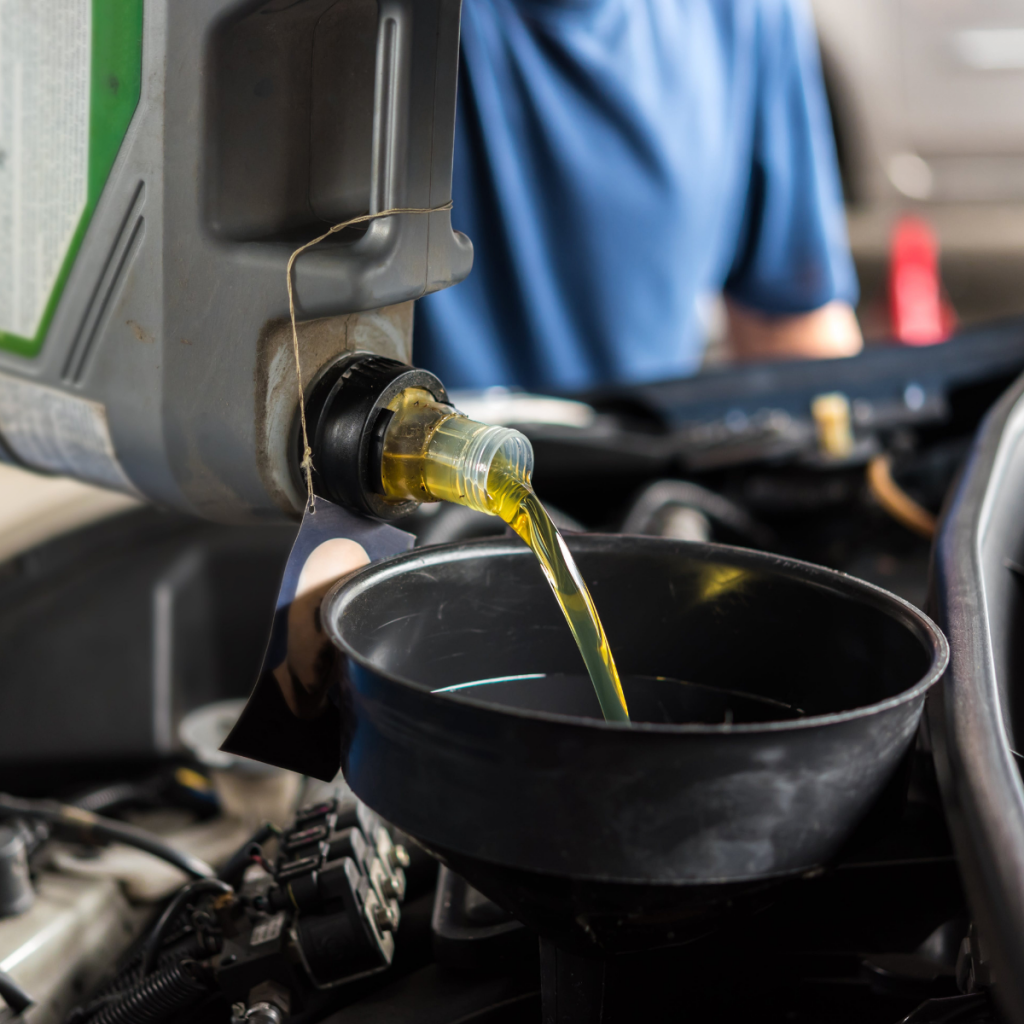Maintaining your car’s engine is essential for keeping it running smoothly, and one of the most important aspects of this maintenance is regularly changing your car’s oil. Oil lubricates the engine parts, reducing friction and preventing overheating. Without proper lubrication, the engine could wear down prematurely, leading to costly repairs. In this blog post, we’ll explain why and when you need to change your car’s oil, and provide a step-by-step guide on how to do it yourself, saving you money and ensuring your engine stays healthy.
Why You Need to Change Your Car’s Oil
The main function of engine oil is to lubricate the moving parts of your car’s engine, reducing friction between metal components and preventing overheating. Over time, however, oil breaks down and loses its effectiveness. Dirty oil can no longer protect the engine as it should, which can lead to engine wear and tear. Here are the key reasons why changing your car’s oil regularly is crucial:

1. Engine Lubrication:
Oil keeps the engine’s moving parts lubricated, reducing friction and minimizing the chances of damage. Without sufficient oil, parts of the engine could overheat or grind against each other, causing irreversible damage.
2. Cooling the Engine:
Oil helps to absorb heat from the engine and dissipate it, preventing overheating. As the oil circulates through the engine, it carries heat away from the components, which allows the engine to maintain an optimal operating temperature.
3. Cleaning the Engine:
Engine oil also acts as a cleaner, trapping dirt, dust, and debris that enter the engine. Over time, contaminants can build up in the oil, reducing its ability to protect the engine and causing unnecessary wear.
4. Improving Fuel Efficiency:
Fresh oil ensures that the engine runs more smoothly, which in turn can improve fuel efficiency. Dirty or low-quality oil increases friction, forcing the engine to work harder and consume more fuel. Changing your oil regularly can help maintain fuel efficiency.
5. Preventing Costly Repairs:
Regular oil changes help prevent major engine problems. Dirty oil can cause sludge buildup and clog important engine components. If not addressed, this can lead to significant repairs or engine failure, which can be extremely expensive.
When to Change Your Car’s Oil
The frequency of oil changes depends on several factors, including the type of oil your vehicle uses, the age of your car, and your driving habits. However, most car manufacturers recommend changing the oil every 3,000 to 5,000 miles for conventional oil and every 7,500 to 10,000 miles for synthetic oil. It’s essential to follow your car’s owner’s manual for specific recommendations, as they may vary based on the model and engine type.
Several signs indicate that it might be time for an oil change, including:
1. Check Engine Light or Oil Change Light:
Many modern cars have a warning light on the dashboard that alerts you when it’s time to change the oil. If your check engine or oil change light comes on, it’s a clear indication that you need to change your oil.
2. Oil Color and Consistency:
When you check the oil level, you should notice that the oil is a translucent amber color. If the oil appears dark and gritty or smells burnt, it’s time to replace it. You can check the oil by pulling out the dipstick and wiping it clean with a cloth, then reinserting it to check the level and color.
3. Engine Noise:
If your car’s engine starts making unusual noises or is louder than usual, it may be due to dirty or low oil levels. Oil helps lubricate the engine and reduces friction, so a lack of oil can cause the engine to make more noise.
4. Decreased Performance or Fuel Efficiency:
If your car is consuming more fuel or isn’t performing as smoothly as it used to, dirty oil could be the culprit. A change in performance can indicate that the oil is no longer effectively lubricating the engine.
How to Change Your Car’s Oil: A Step-by-Step Guide
Changing your car’s oil is a relatively simple task that can be done at home with the right tools and a bit of knowledge. By changing the oil yourself, you’ll save money and gain a sense of accomplishment. Below is a step-by-step guide on how to change your car’s oil.

Tools You’ll Need:
- New oil (check the owner’s manual for the type and quantity required)
- New oil filter
- Wrench or oil filter removal tool
- Funnel
- Oil drain pan
- Gloves and rags
- Jack and jack stands (if needed)
Step 1: Prepare Your Car Start by parking your car on a flat, stable surface. Turn off the engine and let it cool down for a few minutes to avoid burns. If your car is low to the ground, you may need to raise it with a jack and secure it with jack stands. Ensure you have enough space to work under the vehicle.
Step 2: Drain the Old Oil Place the oil drain pan beneath the oil drain plug. Use a wrench to loosen the plug, and allow the oil to drain completely into the pan. It may take a few minutes for all the oil to drain out. Be careful, as the oil may still be warm and could spill.
Step 3: Replace the Oil Filter While the oil is draining, locate the oil filter (check your manual for its location). Use an oil filter removal tool or a wrench to loosen and remove the old filter. Be prepared for a little residual oil to spill out when removing the filter. Before installing the new filter, apply a small amount of fresh oil to the rubber gasket of the new filter. This helps create a proper seal and makes it easier to remove the filter next time.
Step 4: Add the New Oil Once the old oil has drained, replace the drain plug and tighten it securely. Now, it’s time to add the new oil. Place a funnel in the oil fill cap opening and pour in the recommended amount and type of oil for your car. Check the level using the dipstick and add more oil if necessary.
Step 5: Check for Leaks and Test the Engine After replacing the oil filter and adding new oil, start the engine and let it run for a few minutes. This allows the oil to circulate through the engine and ensures there are no leaks from the oil filter or drain plug. Turn off the engine and wait a few minutes before checking the oil level again. Add more oil if needed, and dispose of the old oil and filter properly at a recycling center.
Conclusion
Changing your car’s oil is one of the most important aspects of vehicle maintenance. Regular oil changes help keep the engine lubricated, cool, and running smoothly, preventing costly repairs down the road. By following the recommended oil change intervals and understanding the signs that it’s time for a change, you can extend your vehicle’s lifespan and save money in the long run.
Do you feel more confident about changing your car’s oil now? Remember, proper oil maintenance will not only improve your car’s performance but will also contribute to its overall health. For more tips on car maintenance and other DIY tasks, be sure to visit our website and get in touch with our experts! Your car deserves the best care—start today!

Leave a Reply